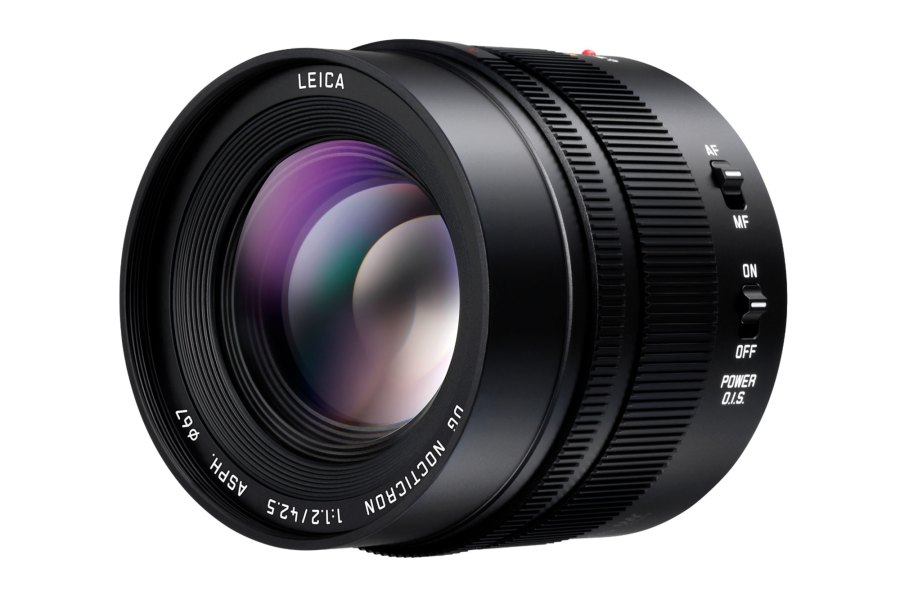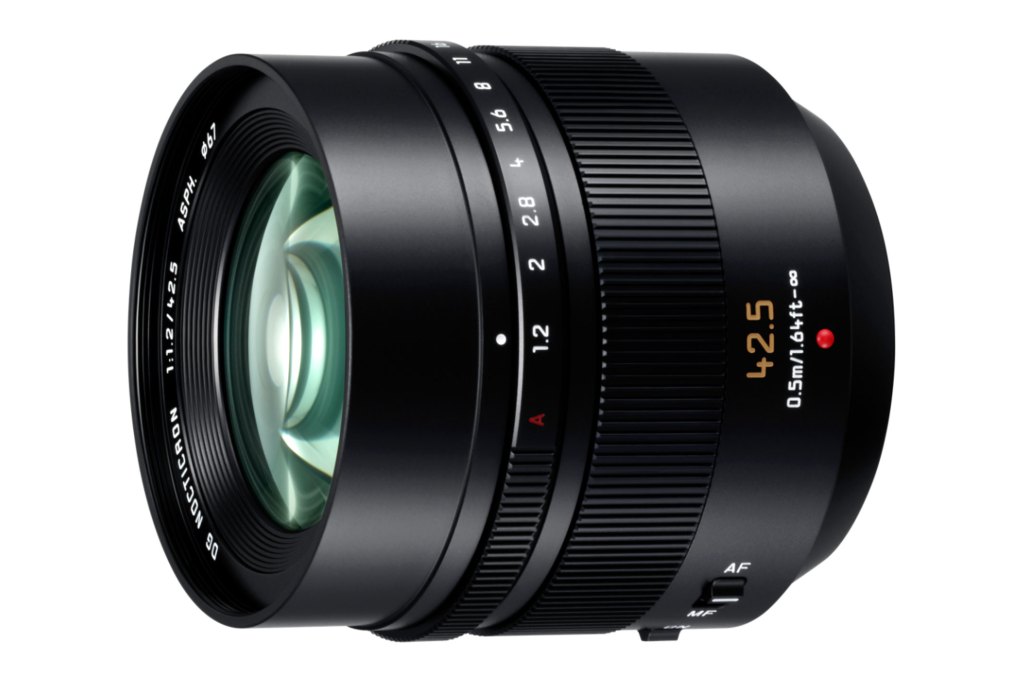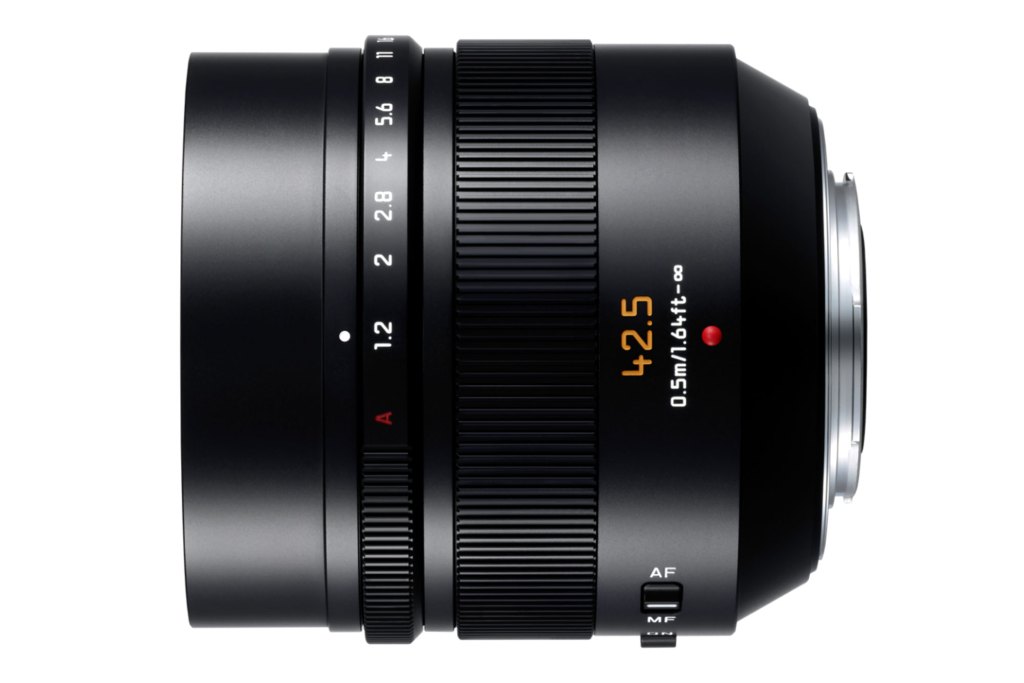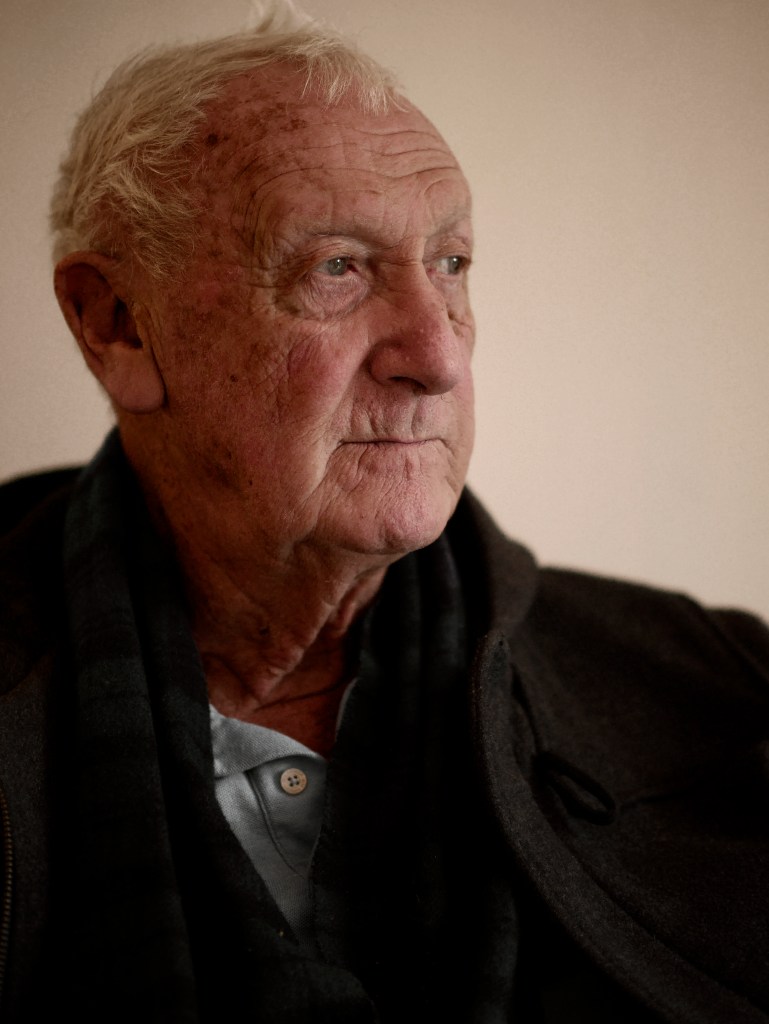The Leica DG Nocticron 42.5mm f/1.2 Asph Power OIS lens for Micro Four Thirds cameras is Panasonic’s premium portrait lens, giving an 85mm equivalent. Damien Demolder reviews this lens, which remains almost entirely unchallenged in the world of Micro Four Thirds lenses.
Leica DG Nocticron 42.5mm f/1.2 Asph Power OIS – Introduction
The difference between a myth and a legend is less than entirely clear-cut. In common usage, a ‘myth’ is a story that is wholly fabricated, while a legend is at least based on a degree of truth – however historic and altered that truth might be.
This minutiae of linguistics occurred to me as I brought to mind the glitzy reputations of the wide-aperture 85mm portrait lenses used by professionals down the generations. I suppose it is the look and style of this focal length, with the possibility of extremely shallow depth of field, that has made the 85mm f/1.2 a legendary lens for those hoping to make a difference in the field of portrait photography. That these lenses have been of exceptional quality, though, is the bit that is completely mythical.
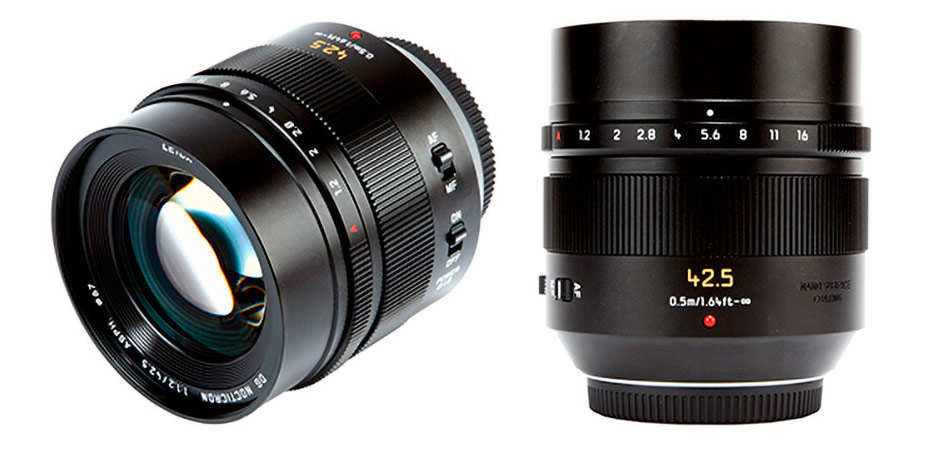
The fact is that all those lenses I have ever used have performed very much like a toy lens when used wide open. The centres might be sharp, but image quality falls away as we progress down that diagonal line from the centre of the frame to the corner, and we get to enjoy vignetting, dropped focus and occasionally the swirling madness of coma distortions – not to mention the break up of contrasty edges into a neon cocktail of green/cyan chromatic fringing.
Technically, these lenses have been poor, requiring the expensive aperture to be closed to f/4 or f/5.6 before a respectable performance can be achieved – although, of course, it is easy to forget that this is their charm. For a centrally placed subject and a desire to draw a focused eye from the page in glorious 3D effect, these characteristics are heaven-sent.
With the benefit of a smaller imaging area, the Micro Four Thirds system has the opportunity to create the classic shallow depth-of-field effect with a focal length that is much easier to make well. And when we double the focal length of this new 42.5mm lens according to the 2x magnification of the Micro Four Thirds system, we find we have the same view as that achieved by the legendary 85mm.
However, making a super-fast 42.5mm lens involves many fewer compromises than the design and construction of the longer focal length demands.
Leica DG Nocticron 42.5mm f/1.2 Asph Power OIS – Build and handling
With that distinctive amber-yellow paint on the black sheer gloss of a metal barrel, the 42.5 marking could easily fool anyone that this is a genuine made-in-Germany Leica lens. And that is, I’m sure, the impression Panasonic wants us to have. The breadth of the barrel too, designed to hold the large-diameter glass, bursts out from the mount in a V-shaped profile that is not dissimilar to that employed by Leica’s own M-series 50mm f/0.95 Noctilux that this lens aspires to be.
Panasonic has actually done a very good job of emulating many of those things about M lenses that appeal to the eye and the touch – the black paint, the cold metal body, and that close-ribbed, sharp-edged, engineered focusing ring. However, the tell-tale signs that this is something else come from the A setting on the aperture ring, which wouldn’t exist on a Leica lens, and the lack of the traditional depth of field scale.
It is quite something that this lens has an aperture ring at all, and is the first to do so in the Lumix range. At the time of release, Fujifilm and Zeiss were the only other mirrorless lens manufacturers to provide manual aperture rings, and since then many others have followed suit.
Although compact for its specification, the Nocticron is broad and heavy compared to most other Lumix lenses, and it is fractionally larger than one might expect a 50mm f/1.4 lens to be for a DSLR. Attached to the front of Panasonic’s Lumix DMC-GX7 – the camera most likely to do its optics justice – it feels a tad large, but it is quite at home on the more substantial GH series such as the Panasonic Lumix GH6.
The optical construction is not miles away from that of the Noctilux. Leica manages to do in eight elements what Panasonic requires 14 for, but we should remember that the Nocticron offers the AF and image stabilisation that Leica does not. The lens uses two aspherical lenses, one extra-low dispersion element and the forward glass has a particularly high refractive index (UHR lens). This UHR element helps to keep the barrel diameter small and reduces the length of the unit. Closest focus is a reasonable 0.5m, and apertures range from f/1.2 to f/16.

Panasonic Leica DG Nocticron 42.5mm F1.2 ASPH Power OIS lens side switches, image courtesy Panasonic.
Leica DG Nocticron 42.5mm f/1.2 Asph Power OIS – In use

Image: Shooting at f/1.2 allowed a shutter speed of 1/400sec for this night scene, at just ISO 3200, making this a great lens for low-light shooting. 1/400s, f/1.2, ISO3200, 42.5mm
Once attached to an appropriate camera, the Leica DG Nocticron 42.5mm f/1.2 Asph Power OIS is a complete pleasure to use. It feels good in the hand and its weight is a constant reminder that we have wide apertures to play with. It seemed a shame to use the lens in its A setting to control the apertures through the camera body, so I made the most of having a manual ring to turn.
Leica M users will know with their eyes shut that this isn’t a Leica aperture ring, as the clicks are deeper and less smooth, but it is very nice all the same. There is a four-click gap between f/1.2 and f/2 to allow for f/1.4, f/1.6 and f/1.8, and then we roll into 1⁄3-stop increments all the way to f/16.
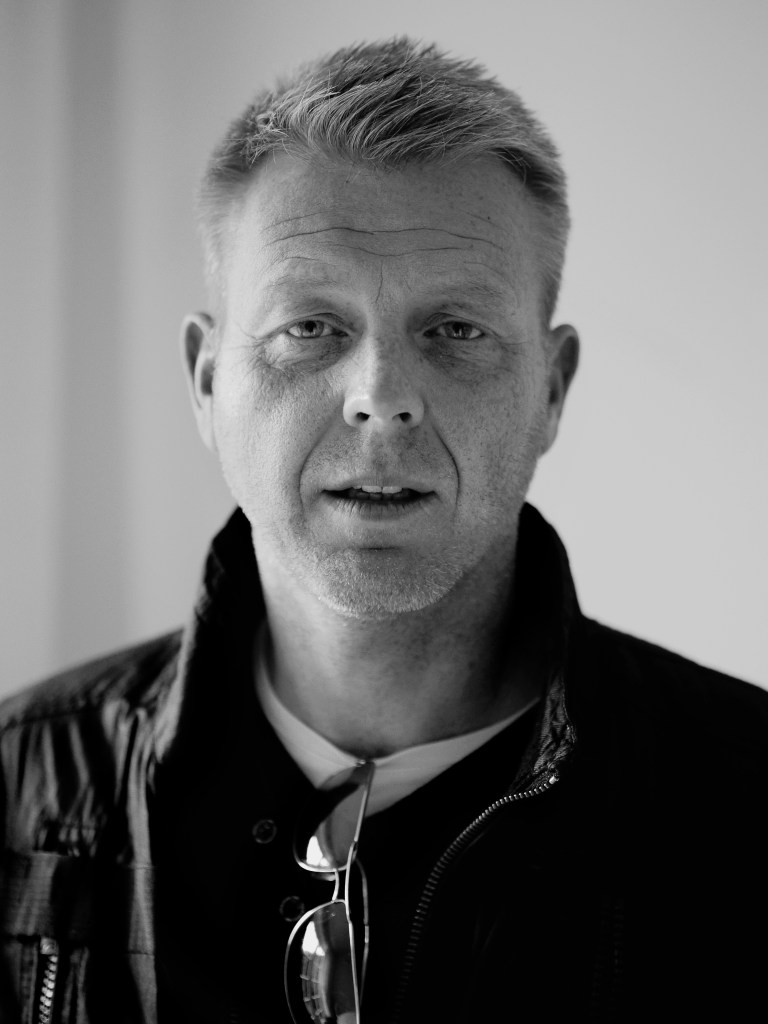
Black and white portrait taken with the Leica DG Nocticron 42.5mm lens at f/1.2, 1/100s, ISO800. Photo: Damien Demolder
While it is wonderful to have such a wide aperture on a lens like this, the mirrorless camera market has yet to fully develop the infrastructure to make the most of it. Many entry-level mirrorless bodies are restricted by minimum ISO settings of more than 100, and top shutter speeds of 1/4000sec or longer, and this lens will benefit from more premium cameras.
On a reasonably bright day it is common to run out of the short speeds and low-sensitivity settings that allow the lens to be used wide open, so then we have to close down and miss out. In night-time street scenes, however, the wide aperture allows us to work handheld without resorting to resolution-damaging ISO settings of 6400, for example, which is a great relief.
Are there any issues shooting with the Leica DG Nocticron 42.5mm f/1.2 Asph lens?
A principal issue with using any narrow-angled wide-aperture lens is that of focus shift with recomposition. Traditionally, we might use a convenient point in our camera’s AF array to find our desired focus area, hold the shutter release or AF lock, recompose and then shoot. In close-distance subjects, when a shallow depth of field is in play it is common to discover that the focus shifts behind our desired point, because the actual distance between the lens and the subject has changed.
In normal-distance subjects that rarely matters, but for close head-and-shoulders images with a 85mm-type focal length and an aperture even of f/3.5, the shift is great enough to make a practical difference to sharpness.
This is the reason Hasselblad developed its True Focus in-camera yaw-correction function. DSLR users have to rely on off-centre AF points that often are not far enough away from the middle zone of the screen to be useful for interesting compositions, such as where the subject’s eye is close to the extremes of the frame.
Cameras that use touch-focus systems via the live view screen overcome this focus issue very neatly, and both the GX7 and GH3 that I used this lens with allowed extreme-position focusing without having to use the AF-lock and recompose technique.
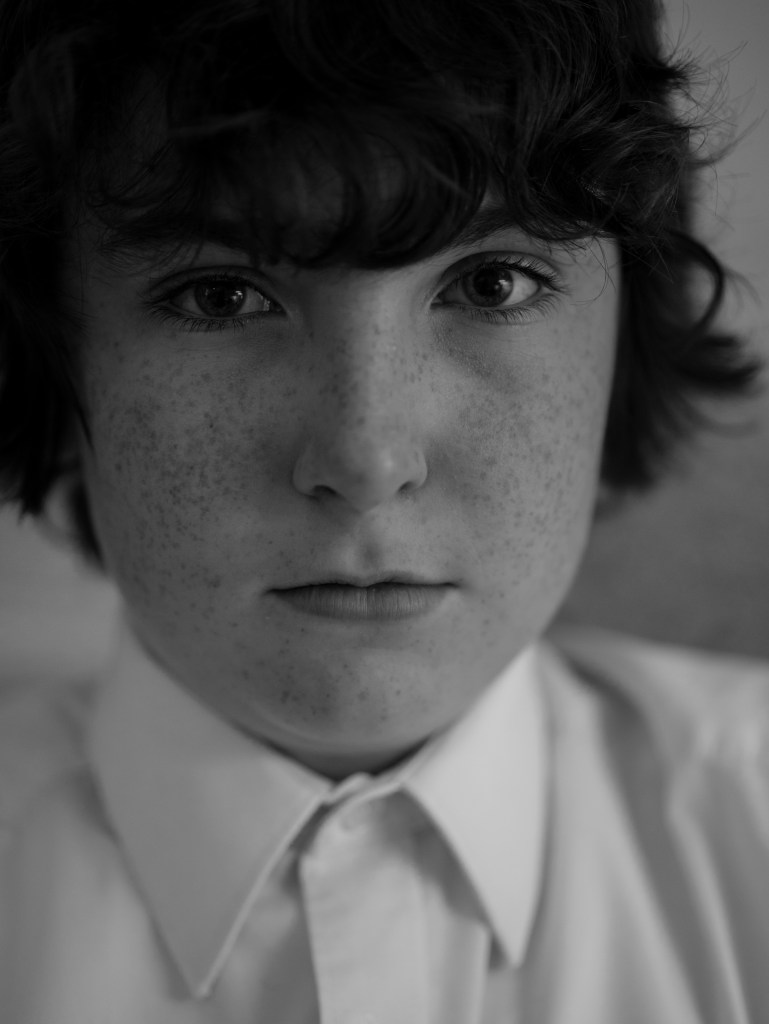
Despite the aperture being fully open, the detail in the eye is still extremely sharp. 1/30s, f/1.2, ISO200, Photo: Damien Demolder
The manual-focus option of this lens is more than usable. Although I’m not a great fan of systems in which the focusing ring is connected only to wires and not a physical helical mechanism, once I became used to the direction of travel I found manual focusing reasonably quick. The GX7 and other Micro Four Thirds cameras offers a peaking service that makes edges bristle with offending colours once focus is found, and which proved more useful than the usual ‘judging by eye’ in an optical finder or a split-screen.
Although with such a large maximum aperture the requirement for long shutter speeds is much reduced, when we do shift up to the better-quality apertures, such as f/8, the supplied Optical Image Stabilisation system proves useful, allowing an additional 3EV of longer shutter speeds. I found that with the weight of the lens, and so long as it is the lens you are supporting and not the camera, the claims are true enough, and I was able to hold the lens very still and be assisted to at least 1/30sec in safety.
While all is supposed to be unified in the Micro Four Thirds system, the Olympus PEN E-PL5 and OM-D E-M5 I tried this lens on refused to acknowledge the aperture ring at all. The body-aperture controls work as normal, so the lens is as usable as any other, but you just don’t get to do the clicky thing with the traditional ring.

The shallow depth of field at f/1.2 can help lift a subject from a distracting background/ 1/500s, f/1.2, ISO200. Photo: Damien Demolder
Leica DG Nocticron 42.5mm f/1.2 Asph Power OIS review – Image quality
How you rate the image quality this lens produces will depend very much on what you are using it for. If you are expecting technical accomplishment at wide apertures so you can record flat documents in low light, you might be unimpressed.
However, if you are in the business of creating atmospheric and romantic impressions of life and your fellow humans, you may develop an entirely different opinion.
In fact, the quality characteristic is very much in line with what we might expect from a wide-aperture moderate telephoto – it vignettes when used wide open and there is some variation in sharpness across the frame.
When using the lens at f/1.2, I experienced the interesting combination of corner shading and centre brightening – in which the edges of the frame are recorded darker than they should be, and the middle of the picture actually becomes brighter than the exposure should provide.
This hotspot dissipates gradually, and disappears by f/5, and corners even out for all intents at about the same time. Part of the reason for this uneven illumination is the degree of ‘out of focus’ that the lens can achieve, especially with close subjects. The vignetting is hardly noticeable when the focus point is in the distance, but the optical disruption is dramatic when we concentrate on a subject at around 6ft (2m).
At the widest aperture setting the nine aperture blades sit redundant in the body of the barrel and we are treated to a completely circular opening. Even when those blades come into play, though, out-of-focus highlights are reproduced as beautiful round discs, and in most cases with very little chromatic fringing on their edges.
I’m also pleased to say that chromatic separation is not a feature of this lens, as it is in so many others of this type, and even high-contrast, defocused edges are rendered clean. That’s quite an achievement, and makes the lens very usable.
Wide apertures produce remarkable sharpness at the edges of the frame, which is important for portraiture, and a great improvement over the sort of edge quality we might have expected.
It is no surprise that f/8 is the aperture that produces the best technical quality, and where we experience peak sharpness and the greatest degree of evenness of both sharpness and illumination.

Sharpness is impressive, in the centre, even at f/1.2. 1/2000s, f/1.2, ISO200. Photo: Damien Demolder. Click to enlarge.
Chart analysis
The test charts for this lens are quite misleading with regard to its qualities. The degree of centre brightening creates the impression of lower contrast, and the charts interpret that as lower resolution, and describe a lens that, when used at wider apertures, is sharper at the edges than it is in the middle. In use, that effect cannot be seen, although it is noticeable that best resolution comes from f/2 and improves to f/8, then drops off. The uneven illumination is highly visible, but again this is resolved by f/5.6-8. Tested on a Panasonic Lumix DMC-GX7.

Value for money
The Leica DG Nocticron 42.5mm f/1.2 Asph Power OIS lens is available for $1399 / £1149 new. However, as this lens has been out for nearly 10 years, you should be able to find this available for much less on the used and second-hand market, with prices starting around $800 / £600 depending on condition. There are a variety of alternative Micro Four Thirds lenses, but none quite match the Leica DG Nocticron 42.5mm f/1.2 lens for quality and feel. A close alternative to look at would be the Olympus 45mm f1/2 PRO lens, with an RRP of £1199.
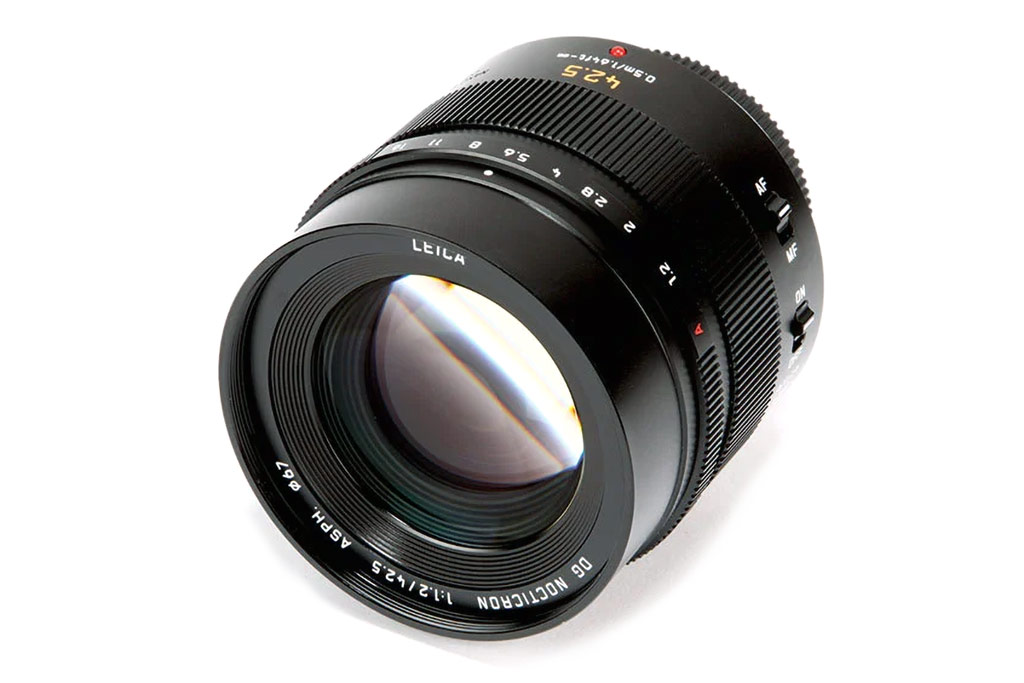
Leica DG Nocticron 42.5mm f/1.2 ASPH Power OIS. Image: AP.
Leica DG Nocticron 42.5mm f/1.2 Asph Power OIS – Verdict
There is no doubt that in a world of contrast-detection systems, a super-bright aperture helps keep focusing speed high. The amount of light pouring through the lens will also help to deliver a noise-free and crisp image in the EVF and on the rear screen, but no one buys an f/1.2 aperture lens for those reasons. The attraction of this lens is the extreme shallow depth of field – the way we can pick out an eye from a face, a head from the background – and create an atmosphere like no other aperture can achieve.
These images suspend reality to an extent, and in the midst of that air of fantasy we might enjoy some vignetting to draw the eye to the subject. Technically, this may not look a very good lens at all wide open, but for the creative photographer it is a delight. And only dull photographers buy a fast lens to use it at f/8.
I have enjoyed using this lens very much, and my pleasure in looking at the images it produces, and the way it can lift a full-sized man from a background only 1-2ft (30-60cm) behind him, is only enhanced by the experience of having it attached to the camera.
While the GX7’s sensor was able to make more of the quality, the surer grip of the Panasonic Lumix GH series, and to some extent the Olympus / OM System OM series, make the camera and lens more balanced and comfortable.
While pricy compared to the 56mm f/1.2 lens that Fujifilm offers, it is a lot less expensive and half the weight of the lens Canon users need to achieve the same effect.

For more options have a look at the best Micro Four Thirds lenses.

